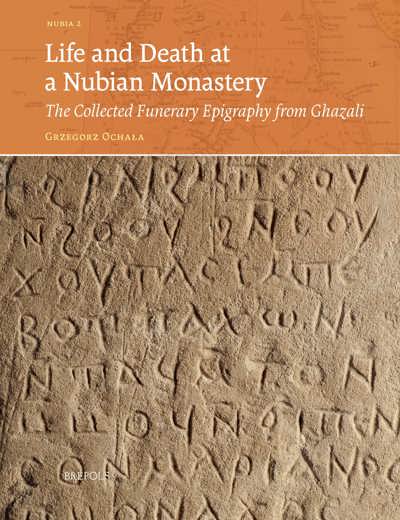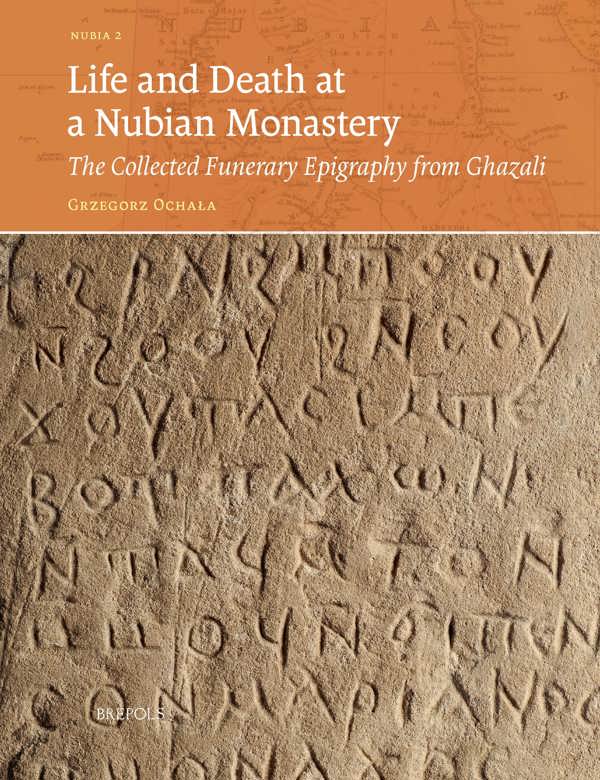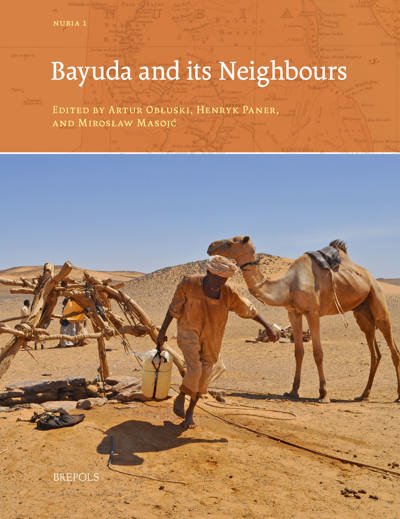
- Pages: 340 p.
- Size:216 x 280 mm
- Illustrations:276 b/w, 78 col., 20 tables b/w., 1 tables col.
- Language(s):English
- Publication Year:2023
- € 110,00 EXCL. VAT RETAIL PRICE
- ISBN: 978-2-503-60064-2
- Paperback
- Available
- € 110,00 EXCL. VAT RETAIL PRICE
- ISBN: 978-2-503-60065-9
- E-book
- Available
The volume is a comprehensive edition of funerary epigraphic monuments in Greek and Coptic from the monastery of Ghazali (Sudan). The catalogue of inscriptions is accompanied by an extensive and thorough analysis of both the context and the contents of the ensemble.
"...Ochała’s work is impressive, and necessary. (...) One can only hope for more volumes like Ochała’s for the sites first studied before the modern scientific period of Nubian studies, and more from him for years to come." (Giovanni Ruffini, in Church History, 3/2024, p. 154)
« ...grâce à la méticuleuse enquête menée par Grzegorz Ochała, chaque pièce trouve sa place dans le casse-tête complexe que constitue ce site, dans lequel le chercheur se trouve sans le repère fondamental qu’est la chronologie. Comme un chasseur expert, chaque trace est traitée avec soin et intelligence, donnant à la communauté scientifique une étude qui n’est pas seulement la voix lointaine des hommes qui ont peuplé le monastère de Ghazali, mais aussi une monographie exemplaire du point de vue méthodologique. » (Maria Aimé Villano, dans Cahiers de civilisation médiévale, 269, 2025, p. 85)
Grzegorz Ochała is assistant professor at the Faculty of Archaeology of the University of Warsaw. He specialises in literary cultures of the medieval Nile Valley and works on epigraphic and papyrological material in Greek, Coptic, and Old Nubian.
The Christian monastery of Ghazali, located in Wadi Abu Dom, in northern Sudan, is one of the most famous archaeological sites within the country. Built by the Makurians in the seventh century AD, it flourished until its abandonment in the thirteenth century, and its picturesque ruins became a popular tourist attraction in the nineteenth and twentieth centuries. During the period of the monastery’s activity, it was an important religious centre, a place where monks lived, worshipped, died, and left important information about their lives buried in the archaeological record.
This volume offers a catalogue and in-depth analysis of over two hundred funerary epigraphy monuments, inscribed in Greek and Coptic, onto stone stelae and terracotta plaques, that have been uncovered at Ghazali and that bear an important witness to life and death at the site. The meticulous epigraphic and philological work presented here is combined with a detailed discussion of the ensemble, including their archaeological context, material aspects, language use, and formulary. The analysis of onomastic practices and the monastic hierarchy supplements the picture and brings to the fore both individual persons and the community responsible for the production of these texts.
List of Illustrations
Preface
Acknowledgements
I. A Study of Funerary Epigraphy from Ghazali
Introduction
Chapter 1. Ghazali: Archaeology and Epigraphy
Chapter 2. Archaeological Context
Chapter 3. The Materiality of Funerary Inscriptions from Ghazali
Chapter 4. Language Use
Chapter 5. The Script and Scribal Conventions
Chapter 6. Formulary of Epitaphs
Chapter 7. The Community and its Members
Chapter 8. Dating the Ghazali Funerary Monuments
Chapter 9. Conclusion: Life and Death at the Monastery of Ghazali
II. Catalogue of Funerary Inscriptions from Ghazali
Note on the Edition
1. Epitaphs with the Prayer ‘God of the Spirits’ (1–16)
2. Epitaphs Invoking God’s Providence, Command, and Will (17–67)
3. Epitaphs of the Commemorative Type (68–70)
4. Epitaphs of Other Types (71–74)
5. Fragmentary Epitaphs (75–205)
6. Sepulchral Crosses (206–223)
Abbreviations
Works Cited
Arabic Summary
Colour Plates
Indices
Concordances


